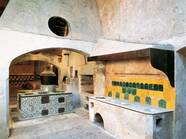Autumn 1982. Along the dark portici in Via Po, chilled to the bone in a blue coat, a little daunted, I try to keep pace with renowned philosopher Norberto Bobbio and follow what he’s saying. We’ve just wrapped up a seminar on the philosophy of science at Palazzo Carignano with an unexpected influx of audience members. Being with him always causes me such anxiety that I lose the ability to focus.
Memories from the anti- fascist city
We’re talking about the “Anni di piombo,” (the Years of Lead) a period of terrorist attacks during the 1970s, when the city of Turin witnessed nearly an attack a week. We talk about the need for an alternative to the industrial culture of Fiat.
We talk about what is bubbling below the surface in Italian politics. Some of his words still affect me deeply: “although I’m not communist, I’ll never be an anti-communist.”
In the city where Antonio Gramsci lived and fought, no one – neither members of the old Action Party nor Liberal Socialists working at the publisher Einaudi, nor academics and intellectuals – can deny their blood ties to the anti-fascist struggle in Turin.”
As welcoming and multiethnic as Paris Spring 2006.
The Rosselli Foundation has, for some time, established its presence in Porta Palazzo, in an old ‘casa di ringhiera’ (a typical block of popular terraced apartments) occupied by Moroccan immigrants. From my office I can see the daily prayers in the courtyard in front of the Mosque. I’m waiting for then President of the Italian Republic Carlo Azeglio Ciampi to arrive for the inauguration of the Rosselli family Archive and Library. I realize how much Torino has changed since 1988, when I helped set up the foundation along with Sandro Pertini, Giuliano Amato, Norberto Bobbio and members of the Rosselli family. Finally, we seemed to have found an objective other than that of erecting a flophouse. Thanks to innovative mayors
like Valentino Castellani and Sergio Chiamparino, strolling around the center of Torino now feels like being in Paris. The city has become so welcoming, so multiethnic. The Rosselli Foundation has witnessed this transformation firsthand.
In 1988, the foundation opened offices near the colossal monument dedicated to Vittorio Emanuele I in Via San Quintino, a middle class residential area. Grey colors, stern faces and long coats ruled the neighborhood. You might have heard dialect being spoken on occasion,
but there were definitely no foreigners. The Platti bar, nearby, continued to be a gathering place for Turin’s former yuppies (the ‘plattinis’), their hair gone to gray. The atmosphere was one of irreversible decline, but braved with dignity.
Urban Reinassance
By contrast, in 2006, the city is enjoying a renaissance. Thanks to the Olympics, it has become the international testing site for urban development: the old city center has been renovated and the city itself has become the capital of contemporary art. It welcomes international tourism. Several technology startups flourish, and Slow Food and Eataly are creating new ways of thinking about how we make and distribute food. Upon his arrival at the new foundation headquarters, President Ciampi is welcomed by colorful kaftans rather than green coats, including the Imam of the courtyard Mosque.
A city of endless creativity
Spring 2012. I’m at GAM (the Gallery of Modern Art) setting up an exhibit of Morandi and Casorati at the Italian Institute of Culture of New York (which I directed at the time). Turin under Mayor Piero Fassino still sparkles. Contemporary art is still its flagship, but the economic crisis and restraints on public spending are undermining efforts at growth. I walk through the narrow streets of Torino’s movida, not far from the quadrilatero (a very central area), and notice that there are fewer people around.
Some restaurants have closed. There is a widespread feeling of uncertainty about the future. Are we going back to the 1980s? I talk about this with the new mayor and my colleagues at the Politecnico. A new experiment is in progress: taking advantage of the Internet to promote Turin’s cultural capital. The new language of the World Wide Web applies to film, TV, art ... and it is necessary to tap this language to make Turin the city of endless creativity. In New York, the Guggenheim, Met, and MoMi will be our travelling companions in this new venture.






























